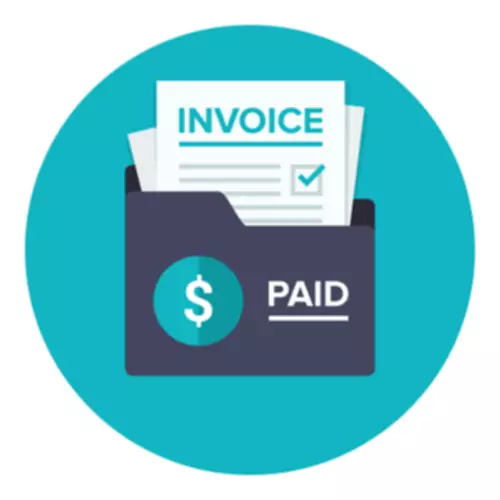Content

Many insurance companies offer discounted rates to encourage this type of prepayment. A wide range of different industries make use of deferred or unearned revenue. They’re referring to the same thing, https://www.bookstime.com/articles/is-unearned-revenue-a-current-liability so you can use these two terms interchangeably. Revenue recognition is one reason why the Financial Accounting Standards Board (FASB) issued the Generally Accepted Accounting Principles (GAAP).
Legals for June, 1 2023 – Bonners Ferry Herald
Legals for June, 1 2023.
Posted: Thu, 01 Jun 2023 07:01:15 GMT [source]
As a result, unearned revenue is a liability for any company that has already received payment without delivering the product. If the company failed to deliver, it would still owe that money to the customer so it cannot be recorded as revenue just yet. While unearned revenue is disclosed as a current liability on a balance sheet, this changes if advance payments are made for 12 months or more.
Examples of Unearned Revenue
The unearned revenue account is usually classified as a current liability on the balance sheet. Unearned revenue is most common among companies selling subscription-based products or other services that require prepayments. Classic examples include rent payments made in advance, prepaid insurance, legal retainers, airline tickets, prepayment for newspaper subscriptions, and annual prepayment for the use of software. What happens when your business receives payments from customers before providing a service or delivering a product?
When a customer pays for products or services in advance of their receipt, this payment is recorded by a business as unearned revenue. Also referred to as “advance payments” or “deferred revenue,” unearned revenue is mainly used in accrual accounting. Due to the advanced nature of the payment, the seller has a liability until the good or service has been delivered. As a result, for accounting purposes the revenue is only recognized after the product or service has been delivered, and the payment received.
What is the Definition of Unearned Revenue?
Once a company delivers its final product to the customer, only then does unearned revenue get reversed off the books and recognized as revenue on your profit and loss statement. Deferred revenue is expected among SaaS companies because they offer subscription-based products and services requiring pre-payments. Let’s say you have a converted customer who makes a booking for your annual SaaS subscription services in January valued at $12,000 ($1000 per month). From a SaaS accounting perspective, you will not earn that revenue until you deliver what you sold to the customer. It means that the $12,000 deferred revenue turns into revenue gradually with each month as the subscription progresses.

If the contract were cancelled and the good or service was not provided, then the company would need to refund the money the customer paid in advance. For this reason, unearned revenue is considered a liability until the good or service is provided, at which point it can be booked as earned revenue or sales revenue. In cases like insurance and subscriptions, the revenue is recognized on a monthly basis. So, using our XYZ Company insurance example, let’s say you sell a 12-month policy for $1,200 and receive the money January 1st; the policy takes effect on January 1st. At the end of every month, you will create an adjusting entry to move 1/12 of the money, $100, to sales revenue. By moving the money with an adjusting entry at the end of the month, it is recognized in the month that the revenue was earned.
Types of Unearned Revenue
There is no difference between unearned revenue and deferred revenue because they both refer to advance payments a business receives for its products or services it’s yet to deliver or perform. Thus, they are items on a balance sheet you initially enter as a liability (an obligation to fulfill in the future) but later become an asset. In accrual accounting, you only recognize revenue when you earn it, unlike in cash accounting, where you only earn revenue when you receive a payment period. Therefore, under accrual accounting, if customers pay for products or services in advance, you cannot record any revenue on your income statement.
Unearned Revenue refers to customer payments collected by a company before the actual delivery of the product or service. Current assets are receivables that a company will get within a year. Generally, they are transactional where money is exchanged for a service/good in real-time. A variation on the revenue recognition approach noted in the preceding example is to recognize unearned revenue when there is evidence of actual usage. For example, Western Plowing might have instead elected to recognize the unearned revenue based on the assumption that it will plow for ABC 20 times over the course of the winter.
Interested in automating the way you get paid? GoCardless can help
Let’s take a look at the lifecycle of one $5,000 advanced payment. You report unearned revenue on your business’ balance sheet, a significant financial statement you can generate with accounting software. You record it under short-term liabilities (or long-term liabilities where applicable). Since it is a cash increase for your business, you will debit the cash entry and credit unearned revenue.
- Contra accounts are used to record values that offset net revenue from actual revenue.
- This criterion includes shifting delivery ownership, collection probability — a reasonable estimate of an amount for doubtful accounts — and evidence of an arrangement plus the determined price.
- Both are balance sheet accounts, so the transaction does not immediately affect the income statement.
- The accrual method of accounting recognizes revenue when it is earned, rather than when cash is received.
- Unearned revenue is classified as a current liability on the balance sheet.
- The cash flow received from unearned, or deferred, payments can be invested right back into the business, perhaps through purchasing more inventory or paying off debt.
- As a result, unearned revenue is a liability for any company that has already received payment without delivering the product.
Similar examples can be seen in the case of gym memberships, yearly maintenance contracts, seasonal amusement park tickets sold in advance, OTT Subscriptions, etc. Simply put, unearned revenue is money that has been received by a company but hasn’t been delivered. This can happen when customers pay for goods or services upfront but don’t receive them until later.
Unearned Revenue Explained
Since prepaid revenue is a liability for the business, its initial entry is a credit to an unearned revenue account and a debit to the cash account. For most businesses where prepayment terms are 12 months or less, unearned revenue is treated as a current liability on the balance sheet. In our example of ABC Company’s pallets, two months after the customer pays, the pallets are produced and delivered to the customer. To recognize the revenue now that it is earned, you will do an adjusting entry to move the money from unearned revenue to sales revenue.
Hence, you record prepaid revenue as an equal decrease in unearned revenue (liability account) and increase in revenue (asset account). Recording unearned revenue is critical if you’re using the accrual accounting method and receiving a lot of advance payments. $5 would be recorded as revenue on the income statement, and the unearned revenue liability would be reduced by $5 to offset it. Unearned revenue is recorded whenever a customer pays for a service or product before they receive it.
Example of Unearned Revenue
This is why it is crucial to recognize unearned revenue as a liability, not as revenue. The income statement for an accounting period will show the revenues recognized. In contrast, the balance sheet will show the liability account for unearned income (revenue) for which the obligations are still pending. Companies must openly declare their unearned revenue as a current https://www.bookstime.com/ liability on their balance sheets, as required by the (Securities Exchange Commission) SEC. This is crucial in enabling investors to accurately assess the company’s financial status and obligations to deliver goods or services in the future. Larry’s Landscaping Inc. has received $500,000 from its customer for landscaping services that it intends to provide next month.
Why is unearned rent a current liability?
It is a liability because even though a company has received payment from the customer, the money is potentially refundable and thus not yet recognized as revenue. Therefore, it commonly falls under the current liability category on a business's balance sheet.
As each of the premium service elements are implemented, additional entries are made by the bookkeeper to indicate that services have been provided to the client. For example, once the new staff is hired and trained, a $2,000 debit entry to unearned revenue is entered and a $2,000 credit entry to cash is entered. Deferred revenue (aka unearned revenue) gets recorded on a company’s balance sheet as a liability.
